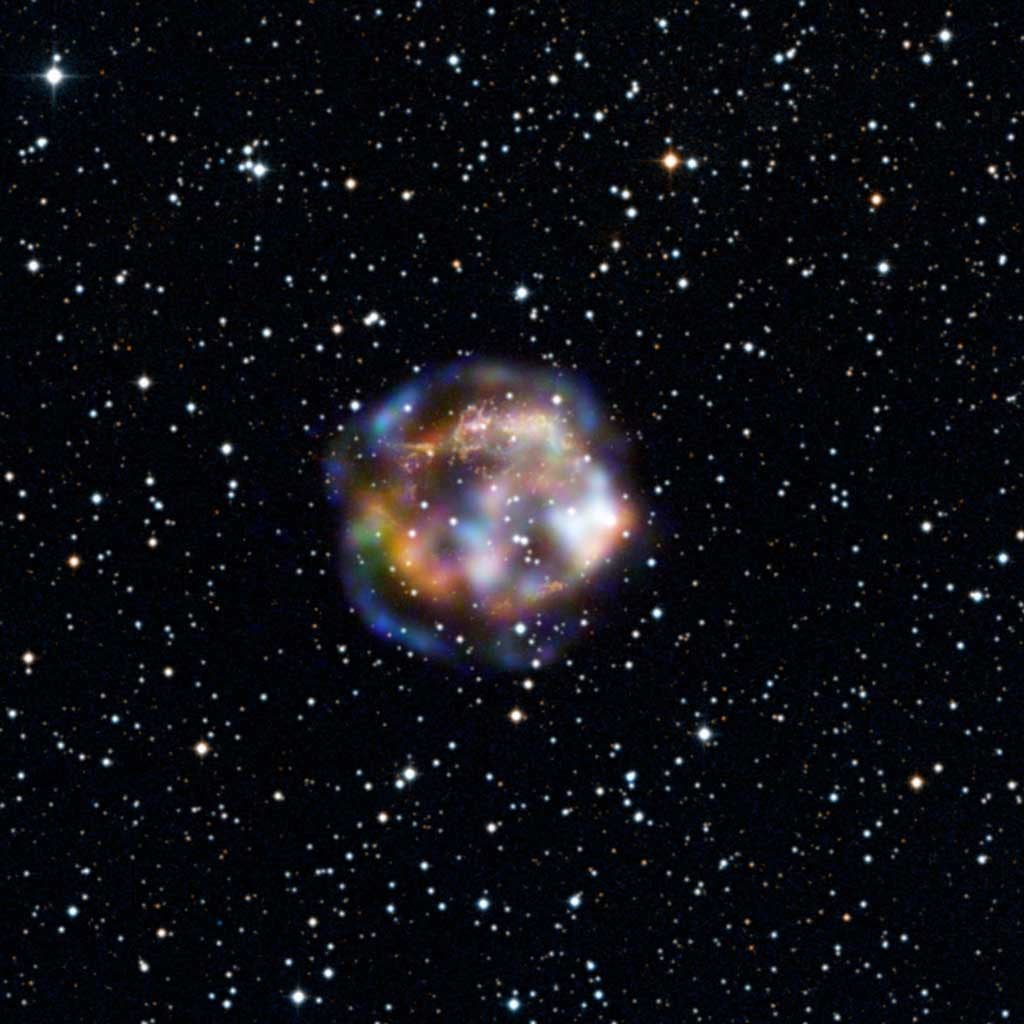Infrared spectra obtained by AKARI have detected a broad feature with a double-peaked profile (see image). A dozen spectra reveal CO features similar to this across the angular extent of Cas A. The CO emission is specially detected not only from the bright ring of shocked ejecta, but also from the central region where unshocked ejecta are located. The CO at the center of Cas A contains material that has been relatively unchanged since a few years after the original supernova explosion. The spectral model applied to these spectra indicates that the broad feature is being composed of a few ten thousand spectral lines produced by CO. Cas A is 330 years old and located at a distance of approximately 11,000 light-years in the direction of the well-known W-shaped constellation Cassiopeia.
“When I saw these beautiful AKARI spectra, I was excited by the fact that carbon monoxide molecules are located within a 10-million-degree gas. It is like detecting CO molecules right at the center of the Sun. The universe is full of surprises!” said Rho. CO molecules are common in space between stars, but these molecules are usually in a cold state. The team captured signals from rare CO molecules that are warm and extremely dense (10 million molecules per cubiccentimeter) by detecting this broad CO spectral feature in the infrared.
Observations from multiple space-based and ground-based observatories have been made in the discovery of CO in Cas A. An infrared image of Cas A that was made with NASA’s Spitzer Infrared Array Camera (IRAC) at a wavelength of 4.5 micrometers unexpectedly showed bright emission from Cas A. This result led the authors to suspect that the emission may be produced by CO as well as the emission from other heavy elements. Follow-up near-infrared images with the Palomar 200-inch Hale telescope indicated a strong possibility that CO is present in Cas A. However, until AKARI detected CO through a spectroscopic observation, the presence of this molecule within this young supernova remnant could not be proved.
By combining AKARI observations with the Spitzer image, “bullets” of CO molecules were shown to exist. These bullets have survived in the 10-million-degree gas of the 330-year-old supernova remnant. “The CO detection challenges our understanding of how molecules form in supernova ejecta and evolve with time,” said Isabelle Cherchneff from the University of Basel in Switzerland. “Are the CO molecules observed with AKARI produced after the explosion? Have they survived until now, sheltered in these clumps? Or can this warm CO have reformed in the remnant? Many intriguing questions arise from these exciting observational data.”
Supernovae are one of the major sources providing heavy elements to the interstellar medium; however, the finding implies that carbon is locked in CO, and, thus, a lot of carbon is not free to return to the interstellar medium. If CO locks up carbon and oxygen in molecular form, it is possible that other molecular species such as silicon/monoxide lock up other heavy elements, too. Detecting CO molecules in supernova ejecta would change scientists’ understanding of astrochemistry, dust formation, and the origin of huge quantities of dust observed in the early universe.










